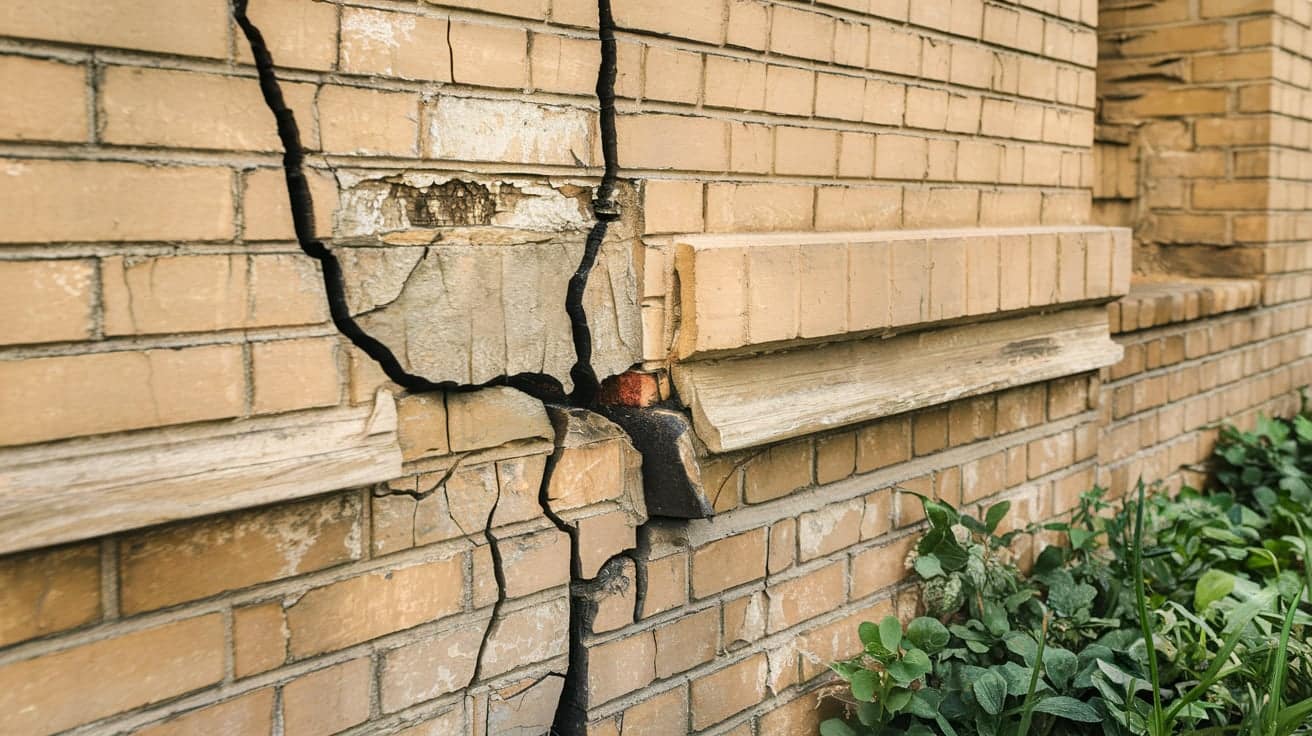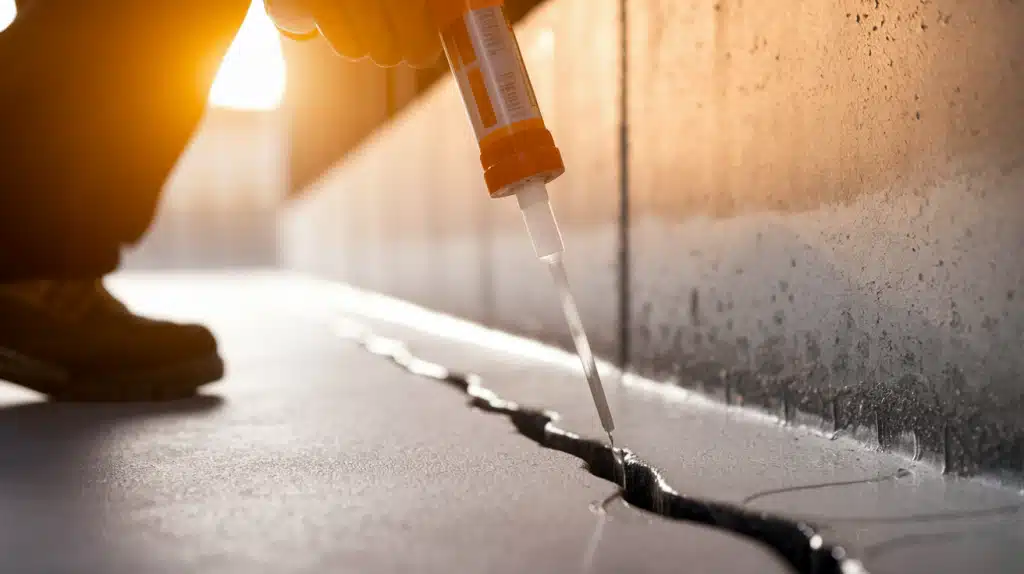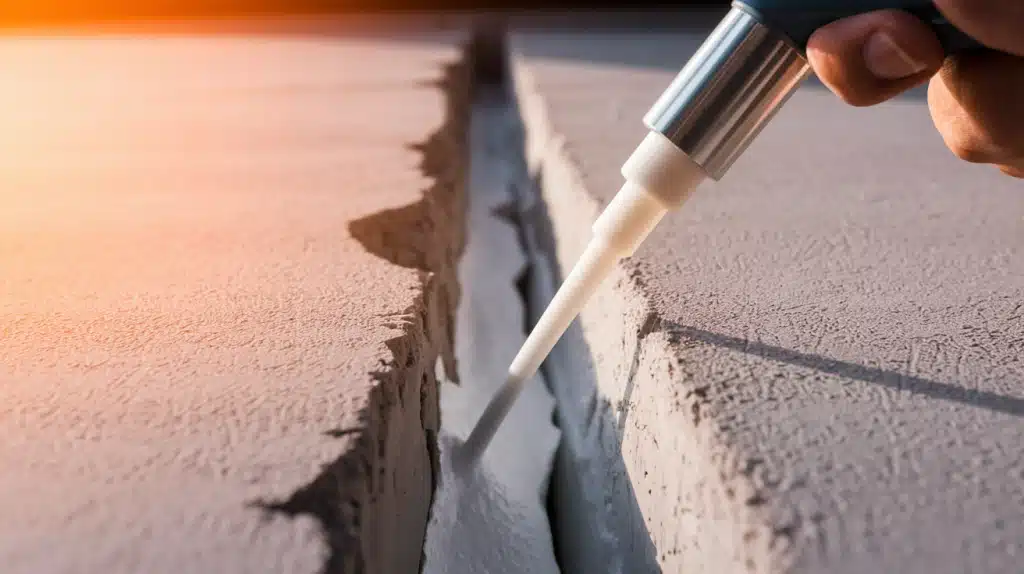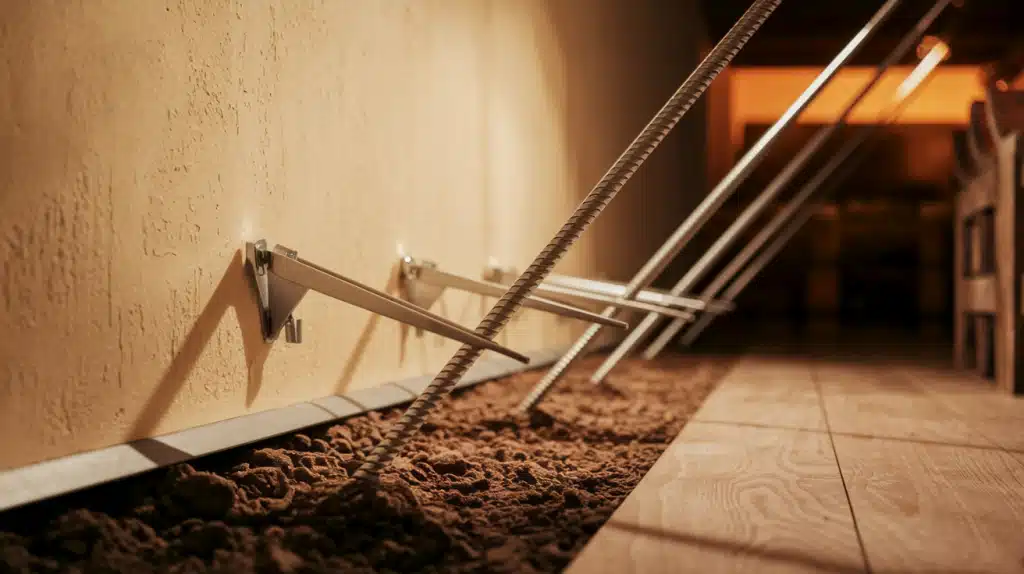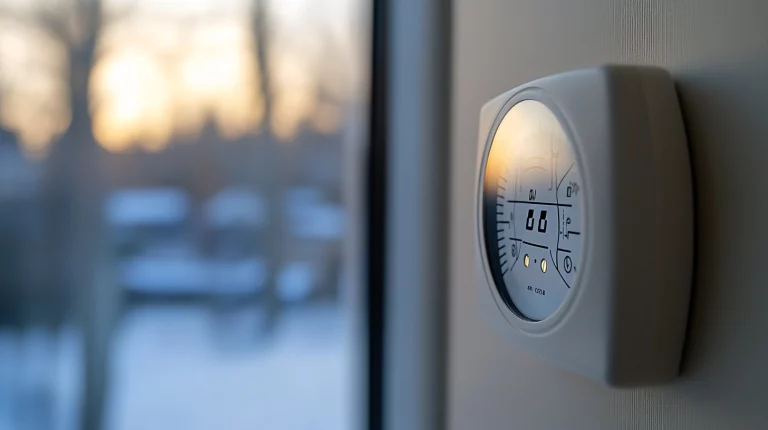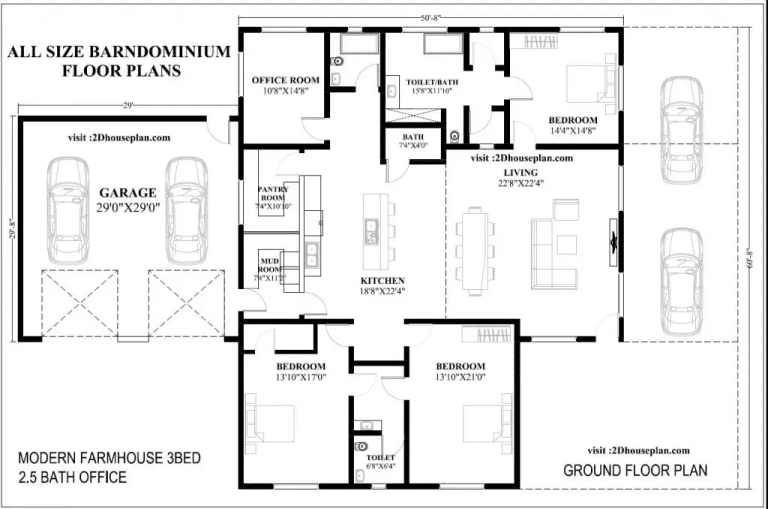Understanding Foundation Cracks: Causes and Solutions
I’ve seen too many homeowners ignore small cracks in their foundation walls, thinking they’re just normal settling.
Then one day, they wake up to water pooling in their basement, doors that won’t close, and repair bills that make their heads spin.
Here’s what most people don’t realize: those hairline cracks you’re seeing today could turn into major structural problems that cost thousands to fix.
The good news? I can help you understand exactly what’s causing those cracks and show you proven solutions that work.
In this guide, I’ll walk you through the most common types of foundation cracks, what causes them, and practical repair methods that protect your home’s value.
You’ll learn how to spot warning signs early and when to call a professional before small problems become big disasters.
Ready to protect your most significant investment? Let’s get started.
Also read: Foundation Problems vs Settling: Everything You Need to Know
What Are Foundation Cracks?
Foundation cracks are breaks or splits that form in the concrete, block, or stone materials of your home’s foundation. These openings can appear as thin hairline fractures or wider gaps that threaten your home’s structural stability.
What Causes Foundation Cracks?
Foundation cracks develop from various environmental and structural factors. Understanding these causes helps homeowners identify problems early and take preventive measures.
- Soil settlement – When soil beneath your foundation shifts or compresses unevenly, it creates pressure that causes cracks to form.
- Water damage – Excess moisture from poor drainage, leaks, or flooding weakens concrete and creates pressure against foundation walls.
- Temperature changes – Freeze-thaw cycles cause concrete to expand and contract repeatedly, leading to stress fractures and structural damage.
- Tree roots – Large tree roots growing near foundations can push against walls and absorb soil moisture, causing the foundation to settle.
- Poor construction – Inadequate concrete mix, improper curing time, or substandard materials used during construction create weak spots that are prone to cracking.
- Hydrostatic pressure – Groundwater buildup around foundations creates intense pressure that pushes against walls, forcing them to crack or bow.
These factors often work together to create foundation problems. Addressing the root cause prevents future damage and protects your home’s structural integrity.
Types of Foundation Cracks
Foundation cracks come in different shapes and sizes, each indicating specific problems. Recognizing these crack types helps determine the severity and urgency of repairs needed.
1. Hairline Cracks

These thin, surface-level cracks, measuring less than 1/8 inch wide, are usually cosmetic issues. They result from concrete shrinkage during the curing process or minor settling.
While they rarely threaten structural integrity, hairline cracks can allow water entry over time. Monitor them regularly for any signs of growth or widening that might indicate developing problems.
Also read: Hairline Crack Fix: Simple DIY Guide That Works Fast
2. Vertical Cracks

Straight up-and-down cracks often occur from natural settling as your home adjusts to its foundation. These cracks typically appear within the first few years after construction.
While generally less serious than horizontal cracks, they can still allow water infiltration into your basement or crawl space. Seal them promptly to prevent moisture damage and monitor for any expansion.
3. Horizontal Cracks

These run parallel to the ground and indicate serious pressure from expanding soil or hydrostatic water pressure. They pose significant structural risks because they show that your foundation walls are being pushed inward.
Horizontal cracks often appear during freeze-thaw cycles or after heavy rainfall. They require immediate professional attention as they can lead to wall collapse if left untreated.
4. Diagonal cracks

Angled cracks typically result from differential settling, where one part of your foundation moves more than another section. This uneven movement creates stress that manifests as diagonal fractures.
These cracks often indicate soil problems beneath your foundation or inadequate support. They can worsen quickly and may signal the need for foundation underpinning or soil stabilization work.
5. Stair-Step Cracks

These zigzag patterns follow mortar joints in block or brick foundations, creating a staircase appearance. They indicate settlement issues where the foundation is sinking unevenly.
Stair-step cracks can worsen rapidly during seasonal changes and may indicate serious structural issues. They often require professional assessment to determine if foundation repair or replacement is necessary for long-term stability.
6. Bowing Cracks

Curved inward cracks indicate extreme lateral pressure against foundation walls due to soil expansion or water pressure. This serious condition threatens the structural stability of your home and indicates that your foundation walls are failing.
Bow cracks often accompany wall deflection and require emergency repair intervention. Professional reinforcement methods, such as wall anchors or carbon fiber strips, are typically required to prevent collapse.
Signs Your Foundation is in Trouble
Your home’s foundation is crucial to its stability, and any issues can lead to costly repairs. Recognizing the signs of foundation trouble early can help prevent further damage. The table provided below will help you identify the common warning signs that indicate your foundation may need attention.
| INTERIOR WARNING SIGNS | EXTERIOR WARNING SIGNS |
|---|---|
| Sticking Doors & Windows – Hard to open/close due to frame warping. | Gaps Around Exterior Features – Separation from steps, porches, or driveways. |
| Uneven or Sloping Floors – Floors feel tilted; objects roll on their own. | Visible Foundation Cracks – Vertical, diagonal, or horizontal cracks on exterior walls. |
| Wall & Ceiling Cracks – Especially above doors or in corners. | Gaps Where Walls Meet Foundation – Noticeable spacing that allows water entry. |
| Nail Pops & Crown Molding Separation – Signs of drywall shifting. | . Bowing or Leaning Walls – Walls curving inward or outward, often with cracks. |
| Moisture or Musty Odors in Basement – Signals hidden foundation leaks. | Cracks Around Basement Windows or Utility Entry Points – Stress fractures at weak areas. |
| Floor Gaps from Baseboards – Floors pulling away from walls. | Foundation Pulling Away from Structure – Gaps near patios, steps, or garage floors. |
Being aware of these red flags helps you catch foundation issues early. If you notice multiple signs, consult a professional to assess the stability of your home.
Repair Methods for Foundation Cracks
Foundation crack repair methods vary depending on the type, size, and severity of the damage. Choosing the right repair technique ensures long-lasting results and prevents future problems from developing.
1. Epoxy Injection
Epoxy injection works best for hairline and small vertical cracks in concrete foundations. A contractor drills small holes along the crack and injects liquid epoxy under pressure.
The epoxy fills the entire crack from inside to outside, creating a waterproof seal. This method restores structural strength and prevents water infiltration. Epoxy injection typically costs less than other methods and provides permanent results for minor foundation damage.
2. Polyurethane Injection
Polyurethane injection seals cracks that allow water entry but don’t require structural repair. This flexible material expands as it cures, filling irregular crack shapes completely.
Polyurethane remains flexible after curing, making it ideal for foundations that experience minor movement. The material creates an effective water barrier but doesn’t add structural strength like epoxy.
This method works well for basement waterproofing and costs less than structural repairs.
3. Underpinning
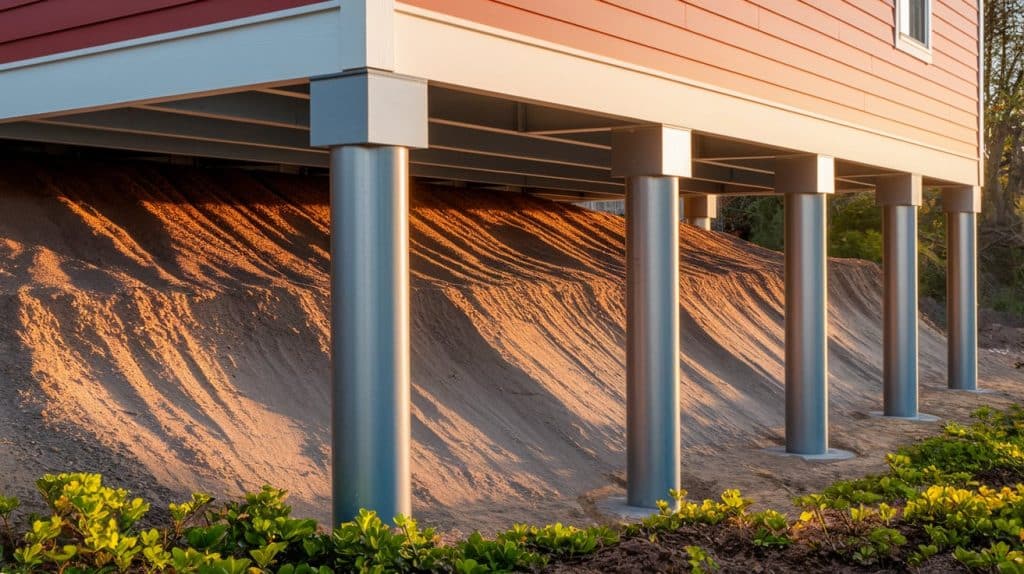
Underpinning strengthens existing foundations by extending them deeper into stable soil layers. Contractors excavate beneath the foundation and pour new concrete footings or install additional support systems.
This method addresses severe settlement problems and increases foundation load capacity. Underpinning works well for older homes with shallow foundations or when adding structural loads. The process requires significant excavation and typically takes several weeks to complete properly.
4. Wall Anchors
Wall anchors stop foundation walls from bowing inward due to soil pressure. Contractors install steel rods that extend from interior walls to buried anchor plates in stable soil. Adjustable brackets allow gradual straightening of bowed walls over time.
This method works well for horizontal cracks and wall deflection problems. Wall anchor installation requires minimal interior disruption and provides long-term structural stability for foundation walls under pressure.
How to Stop Cracks Before They Start?
Want to keep your foundation crack-free? Here’s your game plan!
Keep Water Away From Your Home: Think of water as your foundation’s enemy. Make sure gutters drain properly and slope your yard so water flows away from your house. When water pools around your foundation, it’s like leaving a sponge next to concrete – eventually, something’s got to give.
Become a Crack Detective: Walk around your foundation every few months. Look for tiny hairline cracks that seem harmless. These little guys are like small cuts – seal them quickly before they become big problems. A small tube of concrete crack filler now saves you thousands later.
Smart Plant Choices: Love trees and bushes? Keep them at least 10 feet from your foundation. Tree roots are incredibly strong and will push against concrete as they grow. It’s like arm wrestling with nature – and nature usually wins.
Know Your Soil: If your soil expands and shrinks dramatically with weather changes, consider soil stabilization. Clay soil is especially tricky because it swells when wet and shrinks when dry. This constant movement puts pressure on your foundation walls.
Quick Action: The moment you spot a crack, don’t ignore it. Small repairs cost around $300-500, while major foundation repairs can cost $10,000 or more. Which sounds better to you?
Your home’s foundation bears the weight of your entire structure, making early crack prevention critical for long-term stability. Investing in proactive foundation care today can save you from expensive structural repairs and potential safety hazards tomorrow.
Conclusion
Foundation cracks don’t have to become your worst nightmare. By understanding the difference between harmless settling cracks and serious structural issues, you can protect your home and your wallet.
Remember, hairline cracks might seem minor, but they’re often early warning signs of bigger problems ahead.
Your foundation supports everything above it. When you spot cracks, assess them carefully using the guidelines I’ve shared. Small problems today prevent major disasters tomorrow.
What foundation issues have you noticed in your home?
Keep the learning going!

